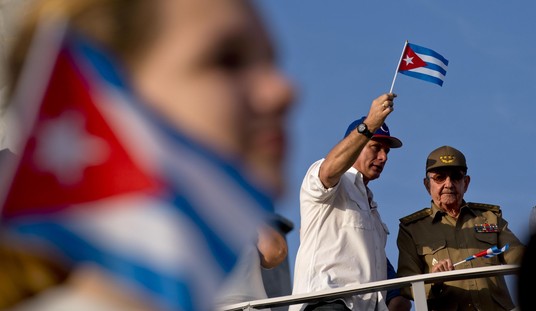Even if you weren’t a regular reader of Donald McNeil’s writing about scientific topics at the NY Times you probably know who he is because of the way he was pushed out of his job earlier this year. McNeil was asked to leave in February after staffers learned that he’d once used the n-word during a student trip in 2019. That incident had been investigated and dealt with at the time by Executive Editor Dean Baquet (who is black), but the woke members of the newsroom staff weren’t satisfied with that and 150 of them wrote a letter demanding a new investigation which led to Baquet reversing himself and famously declaring, “We do not tolerate racist language regardless of intent.”
In any case, McNeil published a piece today on Medium in which he admits the lab-leak theory is a lot more credible than he initially thought. He says that a year ago (when he still had a job at the Times covering the pandemic) it was the general consensus that the lab leak theory arose from conservative cranks and conspiracy theorists and should be dismissed.
For about a year, that was the general wisdom among science writers. The “lab-leak theory” migrated back to the far right where it had started — championed by the folks who brought us Pizzagate, the Plandemic, Kung Flu, Q-Anon, Stop the Steal, and the January 6 Capitol invasion. It was tarred by the fact that everyone backing it seemed to hate not just Democrats and the Chinese Communist Party, but even the Chinese themselves. It spawned racist rumors like “Chinese labs sell their dead experimental animals in food markets.”
China retorting to Trump administration nonsense with nonsense of its own — such as suggesting that U.S. military officers planted the virus during a visit to Wuhan in October 2019 — did not help.
I think McNeil is overstating things quite a bit here. The first person to really raise this issue was Tucker Carlson. Carlson has been hit or miss but at the time he was also one of the first people on the right to argue that the coronavirus was much worse than the flu and one of the first to argue for wearing masks at a time when official government sources were telling people not to bother. In any case, McNeil is now admitting that the lab leak looks a lot more credible to him now than it did back then. He credits science writer Nicholas Wade whose argument for taking the lab leak seriously I wrote about here. After a list of caveats about Wade’s piece, McNeil writes:
The deeper I read into the papers and articles Nick cited, the clearer it became how much new information had trickled out in the last year. Not new to the most intense and well-educated followers of this topic, but new to the greater public debate. I include articles like this, this, this, this and this by Yuri Deigin, Rossana Segretto, Milton Leitenberg, Josh Rogin, Nicholson Baker and others…
I now agree with Nick’s central conclusion: We still do not know the source of this awful pandemic. We may never know. But the argument that it could have leaked out of the Wuhan Institute of Virology or a sister lab in Wuhan has become considerably stronger than it was a year ago, when the screaming was so loud that it drowned out serious discussion.
Again, I think McNeil’s belated admission is more important than his explanation for his own failure to take this seriously, which sounds a bit too much like “Republicans were seizing!” to me. What he now sees is that there are some troubling omissions in the denials by people like Dr. Shi.
The most startling bit of information was that, rather than “finding” RaTG13 in her freezers in February, Dr. Shi had worked with it since at least 2016, but under a different name, RaBtCoV/4991.
RaBtCoV/4991 had not been gathered at random but from a mineshaft in which miners digging bat guano got pneumonia, some fatally. Dr. Shi’s lab sequenced enough of it to be able to say it was the most “SARS-like” of the viruses from that investigation.
There were arguments over whether the miners died of fungal pneumonia, viral pneumonia or both, but that link made it a likely suspect for any lab wanting to explore dangerous viruses. Not mentioning her previous work with it was troubling.
Finally, McNeil adds some original reporting of his own. He spoke to Dr. W. Ian Lipkin from Columbia University who told him that he’d become worried about the possibility of a lab leak after learning some of Dr. Shi’s work was carried out at BSL-2 safety level rather than the top BSL-4 level:
…he learned of studies with Dr. Shi’s name on them showing that work he considers dangerous had been done in level BSL-2 labs, which he considers highly porous to leaks, not just in 2016, but in 2020.
“That’s screwed up,” he said. “It shouldn’t have happened. People should not be looking at bat viruses in BSL-2 labs. My view has changed.”
McNeil concludes that there’s still no firm evidence for one conclusion or the other (natural origin or lab leak) but that Occam’s Razor seems to be swinging increasingly toward the lab leak option.








Join the conversation as a VIP Member